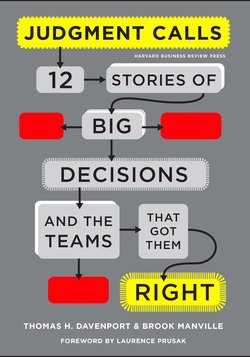Читать книгу Judgment Calls - Thomas H. Davenport - Страница 22
На сайте Литреса книга снята с продажи.
Reflections on Organizational Judgment in NASA STS-119
ОглавлениеIn a recent study, Karl Weick and Kathleen Sutcliffe analyzed what they called “high-reliability organizations”—and what they do to perform consistently at a high level of quality control.9 The mind-set and processes of organizations like hostage negotiation teams, emergency medical teams, nuclear power facilities, and firefighters are integrated and designed to perform better than many organizations; they have to be, because their price for failure is high. A major barrier they constantly fight to overcome is complacency and arrogance. Weick and Sutcliffe note five attributes of these organizations, all of which we can identify in this NASA case: commitment to tracking small failures, the ability to recognize and understand complex issues, real attention to frontline (operational) workers, the ability to learn from and rebound from errors, and the ability to improvise effective response to crisis.
A major part of NASA's ability to do all those things was its problem-solving process, as seen in this case. It both followed a clear and logical analytical approach, in appropriate sequence, and also counterbalanced the sequence by flexibility for change as needed. The overarching culture was one of open exchange, honoring of diverse opinions, and the embrace of the right to dissent. Today we admire NASA not just for its successes but for its ability to rebound from the horrible tragedies of Challenger and Columbia. If ever there has been a resilient and high-reliability organization, it is the National Aeronautics and Space Administration—and the judgment it has built is clearly a very important part of what it is.
